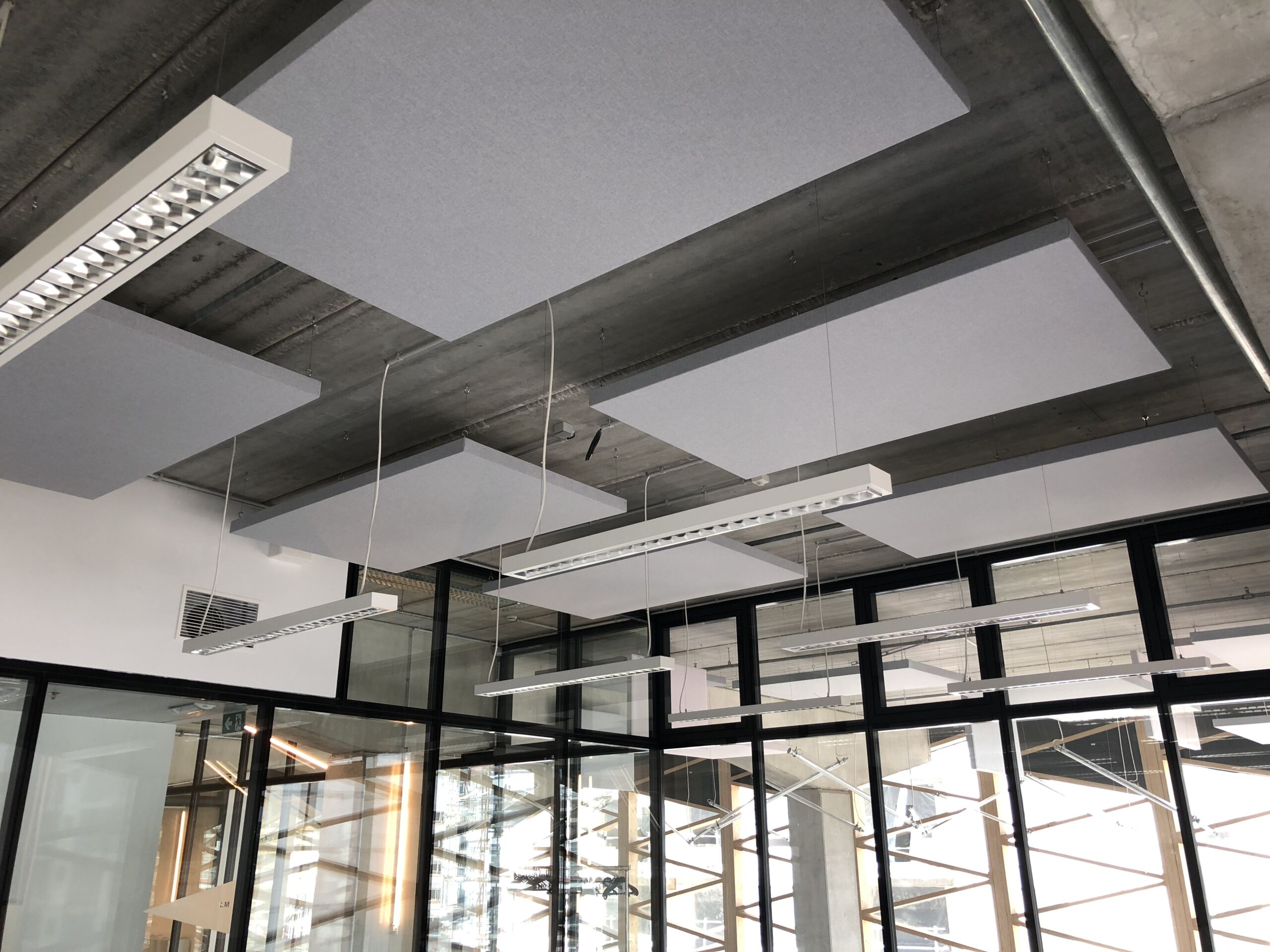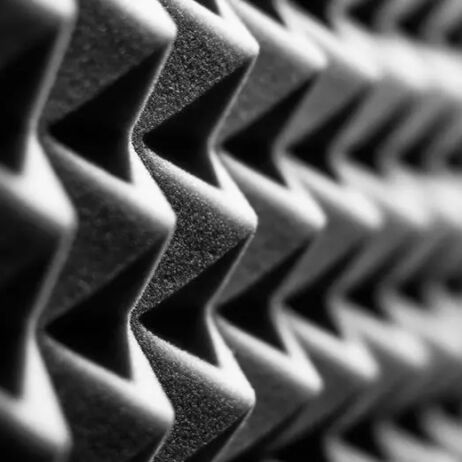Acoustic treatment of a room consists of controlling the sound propagation within it by modifying the acoustic properties of its surfaces to adapt it to the desired use.
Acoustic treatment
Acoustic treatment, a condition for controlled sound environment.
Its goal is to ensure the internal acoustic quality of a room, which can be:
- a place where listening must be favored, that is to say, where the sound level from the source must be reinforced (concert hall, classroom).
- a place where the sound level must be reduced (industrial space, workshop, office, schoolyard, common area, …)
- a specific acoustic place, where the sound level must be reduced, and listening at a short distance must be favored (sports hall, swimming pool, restaurant)
Obtaining good acoustic correction depends on:
- the volume and shape of the room.
- the acoustic absorption of its walls, determined by the materials covering them.


Sound propagation and reverberation
In a room, sound reaches the listener:
- first directly
- then after being reflected one or more times on the surfaces.
If the sound reaching the listener after reflection is distinct from the sound reaching them directly, there is an echo.
When the sound reaching the listener after reflection is not distinct from the sound reaching them directly, there is reverberation.
The reverberation time Tr of a room is the time (in s) it takes for the sound to decrease in intensity by 60 dB after the sound source is interrupted.
Reflections and Absorption
The acoustic quality of a room depends, in part, on its reverberation time. Therefore, depending on the desired quality, the absorbed part of the energy must be increased or decreased by playing with absorbent surfaces.
The more absorbent materials there are in a room, the shorter the reverberation time is, thus:
- the clearer (intelligible) the message emitted because it is not disturbed by reflections.
- the weaker the emitted message is heard, as it is less nourished by reflections.
Absorbent Materials
Analogy: a ball bouncing off a wall is weaker if a curtain has been placed in front of it beforehand. Similarly, absorbent materials reduce reflected acoustic energy.
Three main types of absorbent materials can be distinguished:
- Porous and fibrous materials
- Resonators
- Membranes
